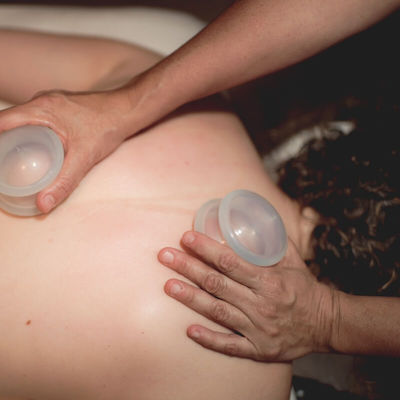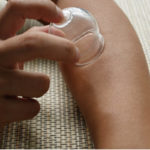Cupping itself is not a well known technique. And it’s even less known that there are different cupping methods. In this blog post I would like to tell you a bit more cupping and go into detail about traditional cupping vs. dynamic cupping.
History of Cupping
Cupping has been used in Eastern medicine for thousands of years. Ancient Egyptians documented its use as far back as 1550 BC. This healing modality has been used throughout the centuries to stimulate blood flow, reduce inflammation, increase immunity, treat tight muscles, high blood pressure by sedating the nervous system, back and neck pain, fatigue, migraines, rheumatism, and much more. This technique is predominantly used by holistic doctors, acupuncturists, and massage therapists.
In general there are 4 predominate types of Cupping:
- Dry
- Wet
- Flash
- Massage
Traditional Cupping in Massage Therapy
Traditional Dry Cupping
Dry cupping is performed using a glass cup. A flammable substance such as a cotton ball soaked in alcohol or herbs is placed in the cup, then set on fire. After the fire goes out, the contents are removed and the cup is placed upside down on the skin. As the air in the cup cools, a suction (varying in intensity) is created, anchoring the glass to the skin. Dry cupping leaves discolored round marks that vary in color intensity and can last for up to 3 weeks. We all remember Michael Phelps famous purple marks at the Rio De Janeiro Olympics in 2016. This is the type of cupping he received.
Wet Cupping
Wet Cupping also leaves cupping marks. It is performed mostly the same way except the practitioner sanitizes the skin then places several small incisions in the area to be cupped. This results in blood being drawn from the body, into the cup as the vacuum is created. Wet cupping is said to relieve pain, stagnation and toxins. It also increases range of motion and promotes rapid recovery.
Flash cupping
Flash Cupping gets its name due to the speed at which the entire process takes place. The process of creating the suction is the same as dry and wet cupping, however no incisions are made to the skin. Several cups are placed, with light to medium pressure, all at once and left for usually no more than one minute. This is done several times successively. This is used when dry or wet cupping is not able to be performed.
Dynamic Cupping in Massage Therapy

Also known as slide or glide cupping, differs from traditional dry, wet and flash cupping. With dynamic cupping, the suction is created by depressing and then releasing a medical grade silicone cup. Then it is pulled over the skin with the use of massage oil.
Dynamic cupping treats all the same issues as traditional cupping and has been said to be even more beneficial for lasting myofascial release than its traditional counterpart.
This technique is painless, relaxing and leaves NO MARKS on the skin. Yay!!!
The ancient art of cupping has many proven health benefits. When coupled with your regular massage therapy schedule it will increase your overall health and well-being.
I hope that this gave you a good overview of traditional cupping vs. dynamic cupping. I use silicone cups during some of my treatments. If you are interested in learning more about how this healing art can benefit your health please contact us or schedule an appointment whenever you’re ready to experience dynamic cupping in your massage session.
~Love & Light
Liraz
Liraz is a gifted healer. Her massage was both strong and gentle, anticipating what was needed for each muscle. Her office is beautiful and relaxing. She has all the amenities for pampering and the strength for deep tissue. I loved the essential oils throughout. Highly recommend!




